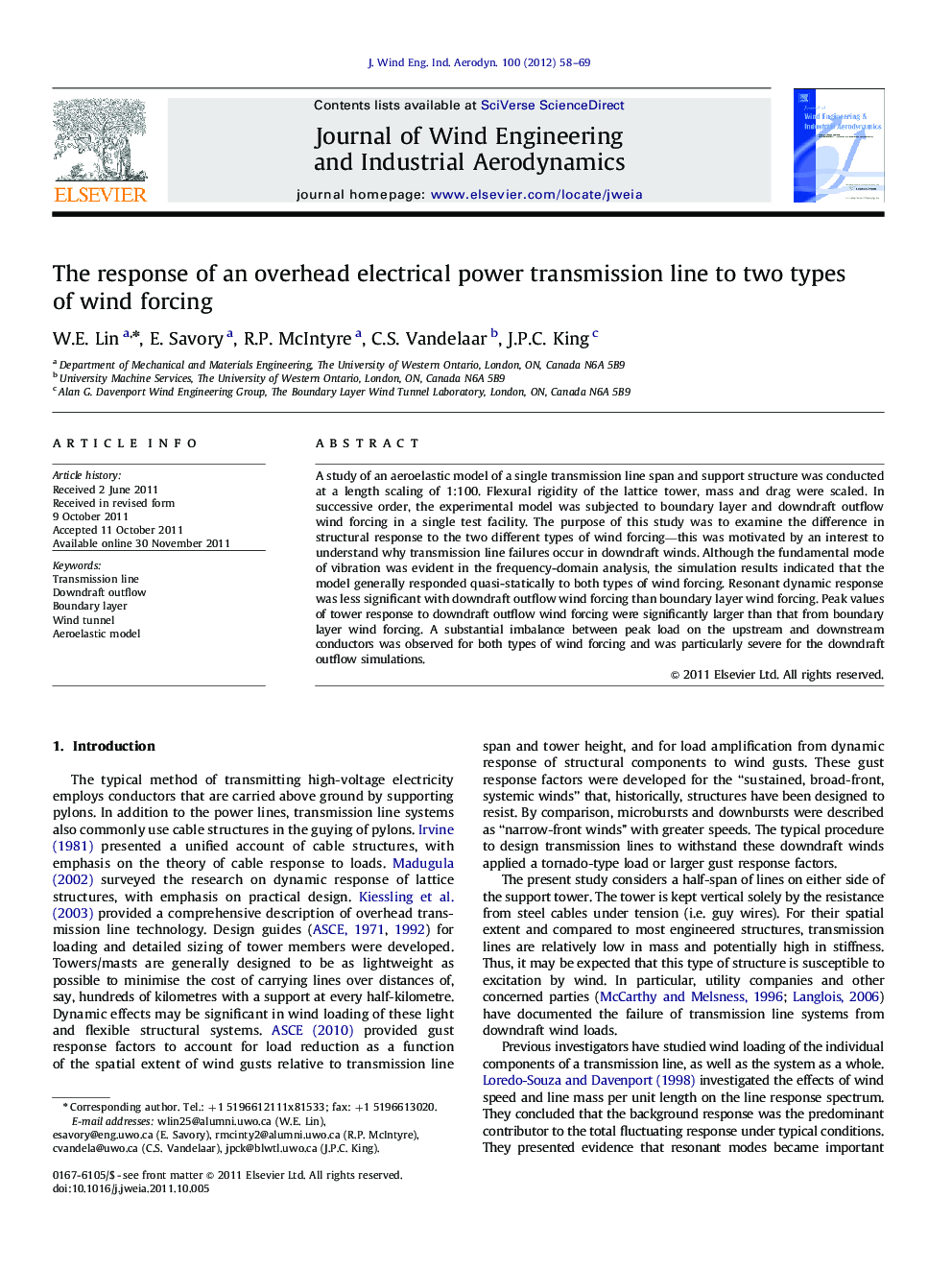| Article ID | Journal | Published Year | Pages | File Type |
|---|---|---|---|---|
| 292538 | Journal of Wind Engineering and Industrial Aerodynamics | 2012 | 12 Pages |
A study of an aeroelastic model of a single transmission line span and support structure was conducted at a length scaling of 1:100. Flexural rigidity of the lattice tower, mass and drag were scaled. In successive order, the experimental model was subjected to boundary layer and downdraft outflow wind forcing in a single test facility. The purpose of this study was to examine the difference in structural response to the two different types of wind forcing—this was motivated by an interest to understand why transmission line failures occur in downdraft winds. Although the fundamental mode of vibration was evident in the frequency-domain analysis, the simulation results indicated that the model generally responded quasi-statically to both types of wind forcing. Resonant dynamic response was less significant with downdraft outflow wind forcing than boundary layer wind forcing. Peak values of tower response to downdraft outflow wind forcing were significantly larger than that from boundary layer wind forcing. A substantial imbalance between peak load on the upstream and downstream conductors was observed for both types of wind forcing and was particularly severe for the downdraft outflow simulations.
► A transmission line system was modelled aeroelastically with length scaling of 1:100. ► Model response to boundary layer and downdraft outflow wind forcing was compared. ► Resonant dynamic response was less significant with downdraft outflow wind forcing. ► Peak values of tower response to downdraft outflow forcing were significantly larger. ► Observed imbalance between peak load on the upstream and downstream conductors.
